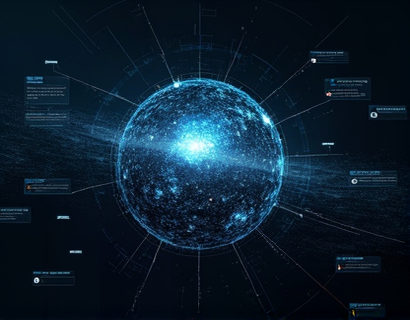Maximize Your Multi-Channel Announcements: A Strategic Guide for Businesses and Individuals
In today's fast-paced digital landscape, effective communication is crucial for businesses and individuals aiming to stand out and connect with their audience. Multi-channel announcements offer a powerful way to reach a broader audience, but managing these announcements across various platforms can be challenging. This comprehensive guide provides expert strategies to streamline your publishing process and enhance message visibility, ensuring maximum reach and engagement. By adopting a user-friendly approach, this guide is tailored for businesses and individuals seeking robust multi-channel solutions to optimize their communication strategy.
Understanding Multi-Channel Announcements
Multi-channel announcements involve disseminating information through multiple platforms simultaneously. This strategy leverages the strengths of each channel to maximize exposure and engagement. Common channels include social media, email newsletters, websites, blogs, and messaging apps. Each platform has its unique audience and engagement patterns, making a multi-channel approach essential for comprehensive coverage.
The primary goal of multi-channel announcements is to ensure that your message is seen and heard by as many people as possible. By using multiple channels, you can cater to different preferences and behaviors of your audience. For instance, some users may prefer receiving updates via social media, while others might favor email newsletters. A well-executed multi-channel strategy ensures that no potential audience member is left out.
Benefits of Multi-Channel Announcements
The advantages of using a multi-channel approach are numerous. Firstly, it increases the likelihood of your message reaching a wider audience. By spreading your announcement across various platforms, you tap into different user bases, thereby expanding your reach. This is particularly important for businesses looking to increase brand awareness and customer engagement.
Secondly, multi-channel announcements enhance credibility and reliability. When the same message is consistently delivered across multiple platforms, it reinforces the authenticity of your brand. Audiences are more likely to trust and engage with a brand that communicates clearly and consistently.
Another significant benefit is improved engagement. Different channels offer unique opportunities for interaction. For example, social media platforms allow for real-time feedback and discussions, while email newsletters can provide more detailed and personalized content. By leveraging these differences, you can foster deeper connections with your audience.
Challenges of Multi-Channel Announcements
While the benefits are clear, implementing a multi-channel announcement strategy is not without its challenges. One of the primary hurdles is coordinating and synchronizing messages across multiple platforms. Ensuring that all channels display the same information at the same time can be complex, especially when dealing with time-sensitive updates.
Another challenge is maintaining a consistent brand voice and message across different channels. Each platform has its own tone and style, and adapting your message to fit these nuances requires careful planning and execution. Inconsistencies can lead to confusion and dilute the impact of your announcement.
Resource allocation is also a significant consideration. Managing multiple channels demands time and effort. Businesses and individuals need to invest in tools and personnel to create, publish, and monitor announcements across various platforms. This can be resource-intensive, particularly for smaller entities with limited budgets and staff.
Strategies for Effective Multi-Channel Announcements
To overcome these challenges and maximize the effectiveness of your multi-channel announcements, consider the following strategies:
1. Centralize Your Content Management
Centralizing your content management is crucial for efficient multi-channel announcements. Use a content management system (CMS) or a dedicated announcement platform that allows you to create and schedule content across multiple channels from a single interface. This approach streamlines the publishing process and ensures consistency in messaging.
Tools like WordPress with plugins for social media management, or specialized platforms designed for multi-channel content distribution, can significantly simplify your workflow. These tools often offer features such as template libraries, scheduling options, and analytics, which can enhance your overall strategy.
2. Develop a Consistent Brand Message
Consistency is key in multi-channel communications. Develop a clear and concise brand message that can be adapted to fit the unique characteristics of each platform. This message should include core values, key benefits, and a call to action. By maintaining a consistent message, you build brand recognition and trust among your audience.
Create a style guide that outlines the tone, language, and visual elements of your brand. This guide should be shared with all team members involved in the announcement process to ensure everyone is on the same page. Regularly review and update the guide to keep it relevant and effective.
3. Utilize Automation and Scheduling Tools
Automation and scheduling tools can save time and reduce errors in your multi-channel announcements. These tools allow you to prepare and schedule posts in advance, ensuring that your messages are published at optimal times without constant manual intervention.
Popular tools include Hootsuite, Buffer, and Sprout Social for social media, and Mailchimp for email newsletters. These platforms often integrate with your CMS, making it easier to manage content across multiple channels. By automating the publishing process, you can focus on creating high-quality content and engaging with your audience.
4. Monitor and Analyze Performance
Monitoring and analyzing the performance of your multi-channel announcements is essential for continuous improvement. Use analytics tools provided by each platform or third-party analytics services to track key metrics such as reach, engagement, click-through rates, and conversion rates.
Regularly review these metrics to identify what works and what doesn’t. Adjust your strategy based on the data to optimize performance. For example, if a particular type of content performs better on one channel, create more content of that type for that platform. This data-driven approach ensures that your announcements are as effective as possible.
5. Engage with Your Audience
Engagement is a critical component of multi-channel announcements. Encourage interactions by asking questions, running polls, and responding to comments and messages promptly. Active engagement not only increases visibility but also builds a loyal community around your brand.
Use each platform’s unique features to foster engagement. For instance, leverage Instagram Stories and Facebook Live for real-time interactions, and use Twitter for quick updates and Q&A sessions. By being present and responsive, you can strengthen your relationship with your audience.
6. Cross-Promote Content
Cross-promotion involves sharing your content across multiple channels to maximize exposure. For example, share a blog post on your website in your email newsletter, on your social media profiles, and in relevant online communities. This strategy ensures that your message reaches different segments of your audience.
When cross-promoting, tailor the content slightly to fit the format and audience of each channel. For instance, a tweet should be concise and include a link to the full article, while a Facebook post can include more context and visuals. This approach keeps your content fresh and relevant across all platforms.
7. Test and Iterate
Finally, continuously test and iterate your multi-channel announcement strategy. Experiment with different content types, posting times, and channels to see what resonates best with your audience. Be open to trying new approaches and learning from what doesn’t work.
Use A/B testing to compare different versions of your announcements and identify the most effective elements. For example, test different subject lines for email newsletters or varying images for social media posts. Based on the results, refine your strategy to achieve better outcomes.
Conclusion
Maximizing your multi-channel announcements requires a strategic and systematic approach. By centralizing content management, developing a consistent brand message, utilizing automation tools, monitoring performance, engaging with your audience, cross-promoting content, and continuously testing and iterating, you can enhance the visibility and impact of your announcements.
Implementing these strategies will help you streamline your communication process and connect more effectively with your audience. Whether you are a business looking to expand your reach or an individual aiming to build a stronger online presence, mastering multi-channel announcements is a valuable skill in today’s digital world.










































